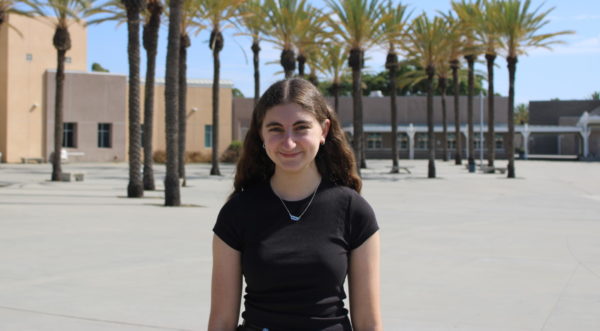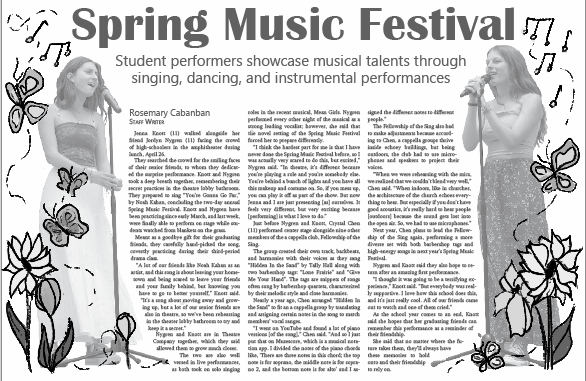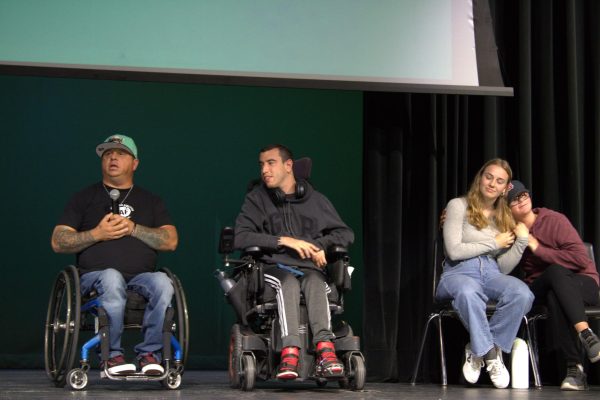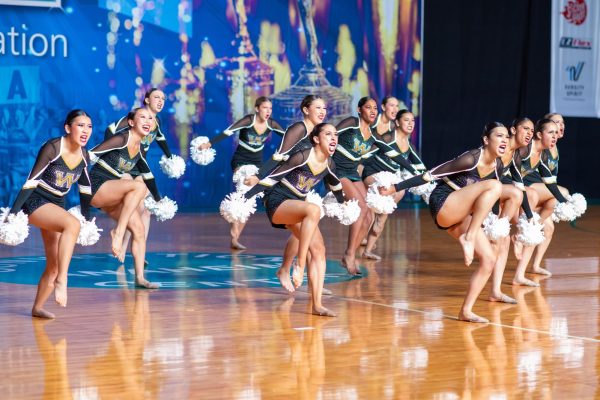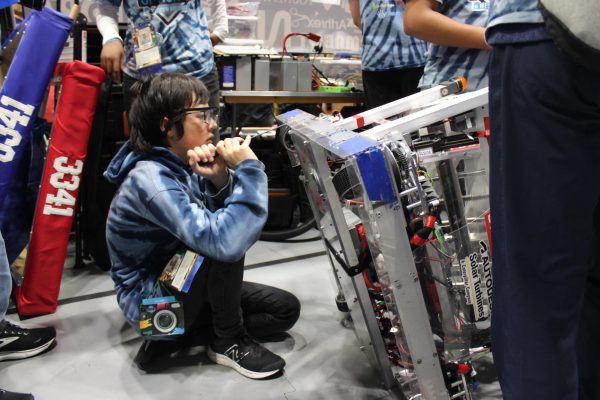GOLD prepares for Poway Rotary Parade
September 16, 2022
Due to a forecast for rain, Westview GOLD ultimately made the decision to not perform in Saturday’s Poway Rotary Parade.
In class the day before, the band directors had still not made a decision on whether or not they would attend. According to Drum Major Daniel Tran (12), it wasn’t until the end of the day that they made their final decision to not perform.
“As the drum major, it is my responsibility to be the bridge between the students and the directors,” Tran said. “I asked [the directors] about what our plan would be in the event that it rained or there was lightning just to have a backup. At that time, we didn’t have a decision yet. It wasn’t until the end of the school day that we made that decision based on weather predictions.”
Tran was especially excited about this year’s parade because of the special role assigned to the drum major while marching.
“Typically, Westview doesn’t have a parade band drum major, but this year was going to be an exception,” Tran said. “I had the opportunity to use a parade mace, which is a long stick that comes from the age of military bands. It has an ornate metal ball at the top. You can do tricks with the mace and you also use it to keep time.”
Associate Band Director Martin Fierro said that GOLD has been participating in the Poway Rotary Parade since Westview’s start.
During the parade, Fierro’s main job is communicating with his students in the back of the group as well as Mitchell Way, the band director, at the front. He makes sure that the students know when to start playing since the parade sequence includes two different songs.
“Mr. Way is in the front and I stay next to the battery, so we are communicating about when we’re going to play and which parts we’re going to play,” Fierro said. “Then I tell the percussion to do the roll-off for that song.”
Malea Wiener (10) has been playing the baritone for 6 years and has been in Westview GOLD since she was a freshman. She is the section manager for the low brass section and a section leader for the baritones, which requires her to help students in her section as well as lead her row while marching.
“[As the section manager,] I help them remember things and make sure they’re on task,” Wiener said. “I’m also in the center of my row. When you march in a block, you have to guide to the center so that everyone’s in a row and some people aren’t ahead or behind.”
Since Wiener marched in the parade last year, she said that she didn’t feel very nervous to perform this year. That being said, while the moving formations of a tournament routine hide mistakes, the stagnant block formation used in the parade allows for errors to be easily viewable.
“When you’re [marching] in the block during the parade, it’s easy to notice when someone messes up because you have to be in step,” Wiener said. “That part is the most nerve-wracking.”
Wiener said that there are a variety of differences between performing at a tournament versus in a parade.
“In a field competition, you make shapes and tell a story along with the music,” Wiener said. “You go in a bunch of different directions and sometimes you’ll stop marching and do a dance. But for the parade, everyone’s in a block and marching continuously forward. It’s easier because we don’t change directions; however, you do have to be in step and keep time.”
According to Fierro, marching along the parade route is much simpler than how they usually perform on the field for tournaments.
“It’s much easier [marching continuously] because we’re just making a block and going down the street as opposed to making different forms and shapes,” Fierro said.
Because the band is marching continuously and needs to be in sync, Wiener said that it’s difficult to coordinate all the different elements and complex rhythms.
“It takes a lot of coordination,” Wiener said. “We don’t always play quarter notes with the beat. Sometimes we play syncopated rhythms, which can make it hard to march in time while playing a completely different rhythm. [To prepare], we mark time, which is when you march in place while playing the song.”
To play an instrument while also marching takes a lot of practice. Fierro said that band members start at band camp in August by just learning how to march. Then the band learns the music separately and the final step is putting the two parts together.
“They’re memorizing music, they’re performing musically, and they’re marching,” Fierro said. “Imagine walking down the street, trying to walk in a straight line, while juggling. That’s what it’s like.”
Although the parade can be a lot of hard work for the students, Wiener said that she enjoys marching in this community event because it allows her to display her musical talents to a larger range of people.
“My favorite part is performing to the community, which is different from football games or band tournaments because it’s all of Poway instead of just our high school,” Wiener said.
For Fierro, the best part is being able to see the crowd watching the parade and supporting them.
“It’s nice when we walk down the main road where there are lots of audience members and they’re all cheering,” Fierro said. “It’s a great opportunity to perform for our community and they get to see the hard work that these kids do.”
Although the students were looking forward to performing in the parade, Tran said that they understood that skipping the event was the safest decision.
“The first big issue was the possibility of rain, which is particularly damaging to woodwind instruments, and also the fact that there was the possibility of lightning, which is not good for brass instruments because they’re metal and held up high above their heads,” Tran said. “But, the band was very understanding about the circumstances because safety is always our top priority.”


